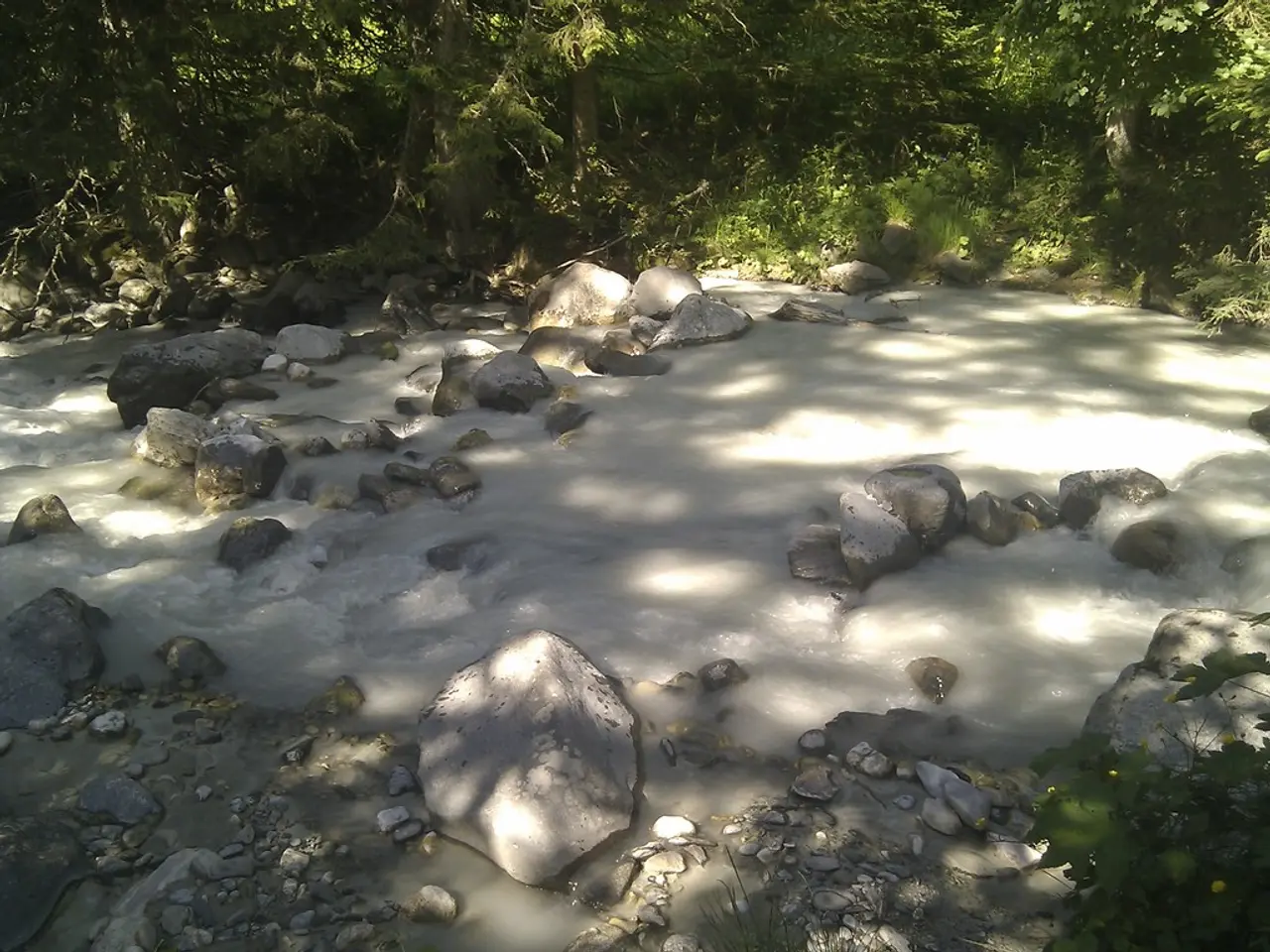Bitcoin mining's environmental impact apparently minimal - MARA offers data on water usage in the process
In the world of Bitcoin mining, MARA Holdings, a leading player in the industry, has been making waves with its resource-efficient operations. With a total capacity of over 40 Exahashes per second (EH/s) across several countries, MARA accounts for around 5.5% of the global Bitcoin hash rate.
Traditionally, Bitcoin mining facilities have relied on air cooling, using fans to dissipate heat. However, MARA has adopted a more efficient approach with water cooling using closed loops. This system, which circulates water directly at the ASIC chips, has very low water loss and is more effective than air cooling.
The efficiency of MARA's water consumption is particularly noteworthy when compared to traditional gold mining and data center operations. MARA Holdings has emphasised that its water consumption per terahash is significantly lower than these industries, highlighting Bitcoin mining's relatively efficient water use when scaled appropriately.
The debate surrounding the water consumption of Bitcoin has been a contentious one. Dutch central bank employee Alex de Vries, who has published studies and comments warning of the alleged ecological effects of Bitcoin, estimated the annual and per-transaction water consumption of the Bitcoin network in a 2023 study. His estimated water consumption per transaction for 2021 was 16,279 liters. However, if all Bitcoin mining facilities worldwide worked as efficiently as those in MARA's Granbury facility, the direct annual water consumption would be over 11 million liters.
MARA's largest mining facility is located in Granbury, Texas, contributing about a quarter of the company's total performance. In 2024, MARA began transitioning the originally air-cooled containers in Granbury to immersion cooling technology, reducing its water consumption significantly. The entire water consumption of MARA's Granbury facility in 2024 was a mere 144,000 liters, primarily for sanitary purposes.
Even more resource-efficient is the immersion technology, where miners are immersed in a non-conductive liquid that dissipates heat. This system uses no water, making it an attractive solution for mining companies looking to reduce their environmental footprint.
It's important to note that the water consumption of the Bitcoin network is not just about direct consumption by cooling systems but also indirect consumption by water-intensive power generation. De Vries's estimated water consumption for 2020 was approximately 590 billion liters, nearly 1.6 trillion liters in 2021, and estimated 2.2 trillion liters in 2023.
Comparatively, US data centers consumed around 66 billion liters of water in 2023, equivalent to the annual needs of about 159,000 American families. Gold mines, known for their water-intensive and often environmentally damaging operations, use water in almost all stages of gold mining and often lead to significant soil and water pollution.
In conclusion, while the water consumption of Bitcoin mining is a subject of debate, companies like MARA are leading the way in demonstrating that resource-efficient methods can be adopted, challenging the stereotype that Bitcoin mining is water-intensive and environmentally damaging.
Read also:
- Achieving Successful Bonsai Grafting: Selecting the Appropriate Scion and Rootstock for Harmony
- Industrial Embrace of Small Modular Reactors Fueled by Progressive Automation Techniques
- Examining Automakers' Transition to Zero-Emission Autos
- pending European health data sharing framework to be introduced








